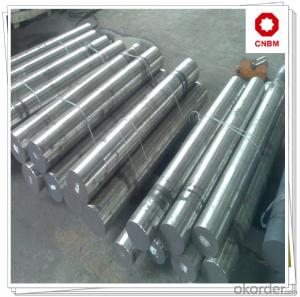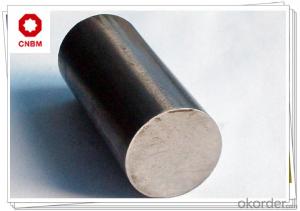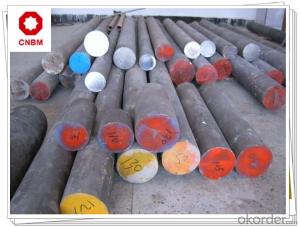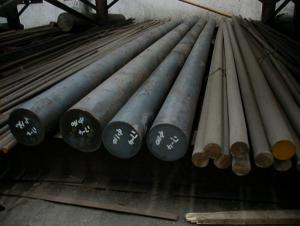Carbon Structural Steel Round Bars SAE1020CR
- Loading Port:
- China main port
- Payment Terms:
- TT OR LC
- Min Order Qty:
- 400 m.t.
- Supply Capability:
- 120000 m.t./month
OKorder Service Pledge
Quality Product, Order Online Tracking, Timely Delivery
OKorder Financial Service
Credit Rating, Credit Services, Credit Purchasing
You Might Also Like
Carbon Structural Steel Round Bars SAE1020CR
PRODUCT USE
1, can be used to produce various types of rivet, bolts and welding structural parts.
2, can be used to produce seamless pipes, mold, steel plate, U-steel and joist steel
PRODUCT MAIN POINTS
1, high quality with competitive price
2, certifictes are available
3, heat treatment specification: tempering, 910 ℃, air cooling
PRODUCT SHOW
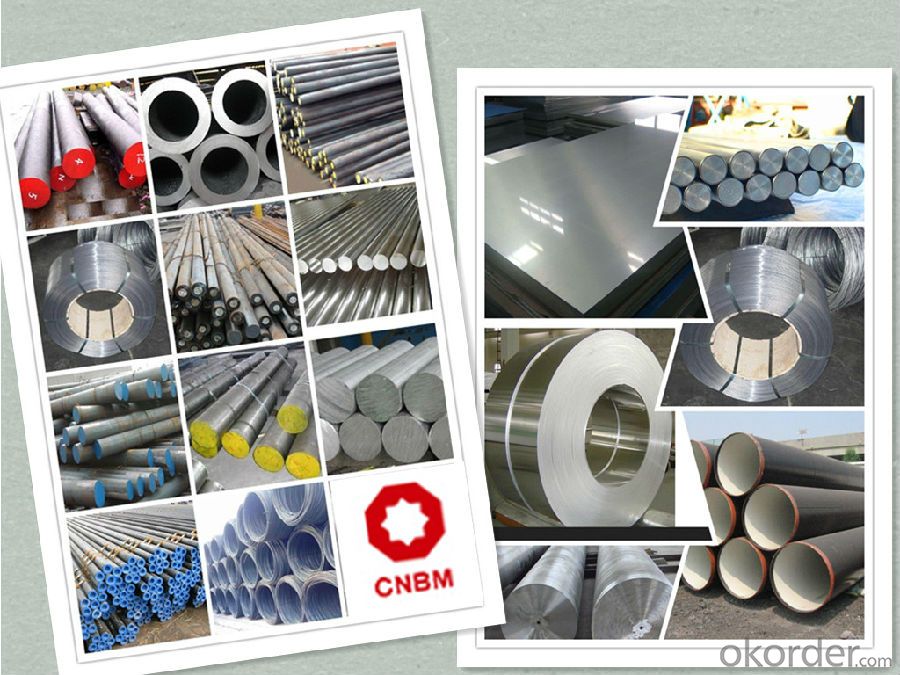
PRODUCT SPECIFICATION
1, Chemical Composition %
| Grade | C | Si | Mn | S | P | Cr | Ni | Cu |
| SAE1020CR | 0.17-0.24 | 0.17-0.37 | 0.35-0.65 | ≤0.035 | ≤0.035 | ≤0.25 | ≤0.25 | ≤0.25 |
2, Mechanical Properties
| Strength of Extension σb | Yield Strength σs | Elogation δ5 | Reduction of Area ψ | Hardness (no heat treatment) |
| ≥410(42) Mpa | ≥245(25) Mpa | ≥25 % | ≥55 % | ≤156HB |
ABOUT US


- Q:What's the difference between Q345 round steel and No. 45 round steel material?
- Q345 is plain carbon steel, and Steel No. 45 is of high quality carbon steel. The biggest difference between them is that the content of sulfur and phosphorus is different.
- Q:How do I determine the load capacity of a steel round bar?
- To ascertain the load capacity of a steel round bar, one must take into account a range of factors. The load capacity of said round bar is contingent upon its diameter, length, and the specific steel variant employed. The ensuing steps elucidate the process of determining the load capacity: 1. Ascertain the steel grade: Distinct steel grades exhibit distinct strength properties. A few examples of common steel grades are A36, A572, and 4140. To pinpoint the precise grade of the steel round bar at hand, reference the specifications or seek guidance from an engineer. 2. Calculate the cross-sectional area: Employ the formula A = πr² to compute the cross-sectional area of the round bar, with A representing the area and r representing the radius of said bar. Remember to convert the diameter to radius by dividing it by 2. 3. Determine the allowable stress: The allowable stress denotes the maximum stress that a material can endure prior to deformation or failure. This value can be gleaned from engineering handbooks or through consultation with an engineer. 4. Apply the load capacity formula: Compute the load capacity of the round bar using the formula Load Capacity = Allowable Stress × Cross-sectional Area. 5. Account for safety factors: In engineering applications, it is customary to incorporate safety factors to ensure the safety of the structure. The specific safety factors hinge upon the application in question and the desired level of reliability. To ascertain the ultimate load capacity, reference the appropriate safety factor for your project. It is crucial to acknowledge that calculating the load capacity of a steel round bar is a multifaceted procedure necessitating expertise in structural engineering. If any uncertainty arises or precise calculations are required, it is advisable to seek the guidance of a qualified engineer who can furnish detailed analysis predicated on the specific parameters of your project.
- Q:What is the maximum hardness achievable for steel round bars?
- The maximum hardness achievable for steel round bars depends on various factors such as the composition of the steel, the heat treatment process, and the desired properties for the specific application. Generally, steel can achieve a maximum hardness of around 65 HRC (Rockwell Hardness Scale C) or higher. This level of hardness is typically obtained through processes like quenching and tempering. Quenching involves rapidly cooling the steel from a high temperature to room temperature, which results in a hardened structure. Tempering is then performed to reduce the brittleness and improve the toughness of the steel while maintaining a high level of hardness. It's important to note that increasing the hardness of steel beyond a certain point may lead to reduced toughness and increased brittleness. Therefore, the maximum achievable hardness should be balanced with the desired properties for the specific application, such as strength, ductility, and resistance to wear or impact.
- Q:Can steel round bars be used in the manufacturing of firearms?
- Indeed, the utilization of steel round bars is feasible in the manufacturing process of firearms. Due to its exceptional strength and durability, steel is frequently employed as a primary material in the construction of firearms. These round bars can be expertly machined and formed into diverse components of a firearm, including barrels, bolts, receivers, and triggers. The hardness and caliber of the steel implemented in the manufacturing of firearms play a vital role in guaranteeing the dependability and safety of the weapon. Thus, it is commonplace to employ steel round bars that satisfy the requisite specifications and standards in the production of firearms.
- Q:What are the different surface defects that can be found in steel round bars?
- There are several surface defects that can be found in steel round bars. These defects can vary in severity and can have an impact on the overall quality and performance of the steel. Some common surface defects include: 1. Scale: Scale refers to the thin, flaky layer of iron oxide that forms on the surface of steel during the manufacturing process. It can appear as a rough, scaly texture and may cause issues with adhesion or coating application. 2. Pitting: Pitting is the formation of small holes or depressions on the surface of the steel. It can be caused by corrosion, contamination, or uneven heating during the manufacturing process. Pitting can weaken the structural integrity of the steel and increase the likelihood of failure. 3. Scratches: Scratches are superficial marks or cuts on the surface of the steel. They can occur during handling, transportation, or processing. While small scratches may not significantly affect the performance of the steel, deep or extensive scratches can create stress concentrations and reduce the strength of the material. 4. Cracks: Cracks are linear fractures that can occur on the surface of the steel. They can be caused by excessive cooling, improper heat treatment, or mechanical stress. Cracks can propagate and lead to catastrophic failure if not detected and addressed. 5. Decarburization: Decarburization is the loss of carbon content on the surface of the steel due to exposure to high temperatures or improper heat treatment. It can result in a softer and weaker surface layer, reducing the material's strength and hardness. 6. Laminations: Laminations are layers or separations within the steel round bar that can occur due to improper rolling or manufacturing processes. These can weaken the material and reduce its load-bearing capacity. 7. Inclusions: Inclusions are non-metallic impurities or foreign substances that are trapped within the steel during the manufacturing process. They can include oxides, sulfides, or other debris. Inclusions can act as stress concentrators and reduce the material's resistance to cracking and deformation. Detecting and addressing these surface defects is crucial to ensure the quality and reliability of steel round bars. Various inspection techniques such as visual examination, ultrasonic testing, magnetic particle testing, or dye penetrant testing can be employed to identify and assess the severity of these defects.
- Q:Are steel round bars resistant to UV radiation?
- Typically, steel round bars lack resistance against UV radiation, which can induce oxidation and lead to rust formation. Consequently, the structural strength of the steel may weaken, potentially causing deterioration over time. However, safeguarding steel round bars from UV radiation is achievable by applying a protective layer like paint or a specialized coating. This layer acts as a barrier against harmful UV rays. Moreover, storing the bars in shaded areas or utilizing covers can effectively reduce their exposure to UV radiation, thus prolonging their lifespan.
- Q:How do you calculate the moment of inertia of a steel round bar?
- In order to determine the moment of inertia for a steel round bar, one must possess knowledge of the bar's dimensions and properties. The moment of inertia serves as a gauge for an object's resistance to rotational changes. The formula utilized to compute the moment of inertia for a solid cylindrical item, such as a round bar, is as follows: I = (π/4) * D^4, where I signifies the moment of inertia and D symbolizes the bar's diameter. Initially, ascertain the diameter of the steel round bar by means of a caliper or ruler. It is essential to measure the diameter at its broadest point, typically found at the center. Subsequently, input the measured diameter into the formula and calculate the moment of inertia. It is crucial to use the correct units for diameter, such as inches or millimeters, to maintain consistency with the formula. For instance, let's assume the diameter of the steel round bar measures 2 inches. By substituting this value into the formula: I = (π/4) * (2 inches)^4 = (π/4) * 16 inches^4 = 4π inches^4. Therefore, the moment of inertia for the steel round bar with a diameter of 2 inches equals 4π inches^4. It is imperative to recognize that this formula assumes a solid cylindrical shape devoid of any alterations in diameter or hollow sections. If the round bar presents variations in diameter or is hollow, the moment of inertia calculation becomes more intricate and necessitates additional considerations.
- Q:Can steel round bars be used in food processing industries?
- Steel round bars are indeed suitable for use in food processing industries. The food industry often opts for steel as it offers exceptional durability, strength, and resistance against corrosion. Food processing equipment, such as mixers, conveyors, grinders, and slicers, can incorporate steel round bars. Moreover, steel round bars are also applicable in the creation of food storage containers, shelves, and racks. Nonetheless, it is crucial to guarantee that the steel employed in food processing industries adheres to food-grade standards, ensuring utmost hygiene and safety.
- Q:What is the maximum temperature steel round bars can withstand?
- The maximum temperature that steel round bars can withstand varies depending on the specific grade of steel. However, in general, most steel round bars can withstand temperatures up to around 1000 to 1200 degrees Celsius (1832 to 2192 degrees Fahrenheit) without significant loss of structural integrity. It is important to note that prolonged exposure to high temperatures can lead to a reduction in the strength and hardness of the steel, as well as potential dimensional changes and distortion. Additionally, the specific properties and behavior of steel at high temperatures can also be influenced by factors such as alloy composition, heat treatment, and the presence of other elements or impurities. For applications requiring steel round bars to withstand extremely high temperatures beyond the typical range, specialized high-temperature steels, such as heat-resistant or creep-resistant alloys, may be used. These alloys are specifically designed to maintain their mechanical properties and structural integrity at elevated temperatures, often up to several thousand degrees Celsius.
- Q:Can steel round bars be used for making brake components?
- Yes, steel round bars can be used for making brake components. Steel is a common material used in the manufacturing of brake components due to its high strength, durability, and resistance to heat and corrosion. Steel round bars can be machined and formed into various shapes required for brake components such as brake rotors, brake caliper brackets, or brake pedal levers.
1. Manufacturer Overview |
|
|---|---|
| Location | |
| Year Established | |
| Annual Output Value | |
| Main Markets | |
| Company Certifications | |
2. Manufacturer Certificates |
|
|---|---|
| a) Certification Name | |
| Range | |
| Reference | |
| Validity Period | |
3. Manufacturer Capability |
|
|---|---|
| a)Trade Capacity | |
| Nearest Port | |
| Export Percentage | |
| No.of Employees in Trade Department | |
| Language Spoken: | |
| b)Factory Information | |
| Factory Size: | |
| No. of Production Lines | |
| Contract Manufacturing | |
| Product Price Range | |
Send your message to us
Carbon Structural Steel Round Bars SAE1020CR
- Loading Port:
- China main port
- Payment Terms:
- TT OR LC
- Min Order Qty:
- 400 m.t.
- Supply Capability:
- 120000 m.t./month
OKorder Service Pledge
Quality Product, Order Online Tracking, Timely Delivery
OKorder Financial Service
Credit Rating, Credit Services, Credit Purchasing
Similar products
New products
Hot products
Related keywords
